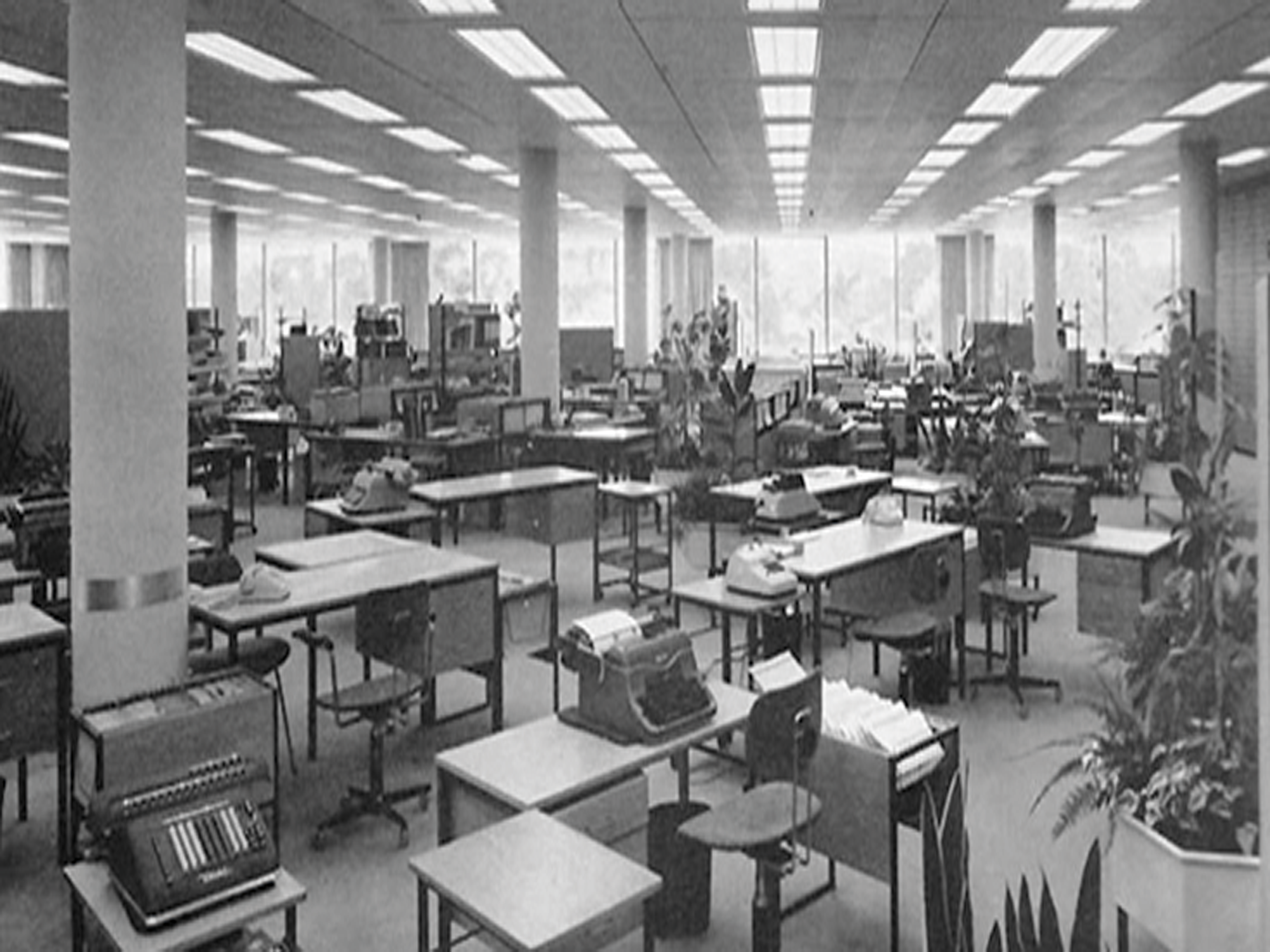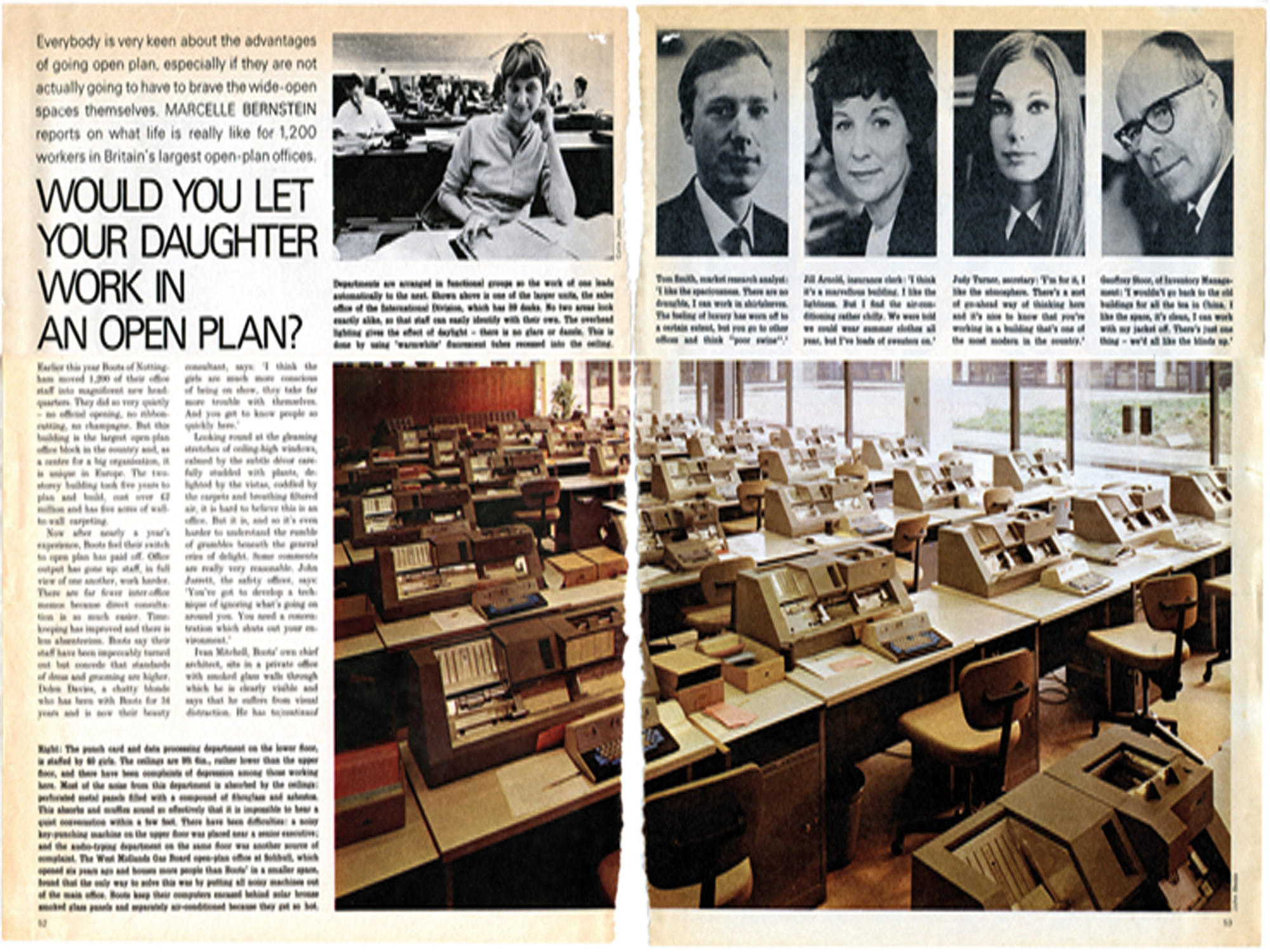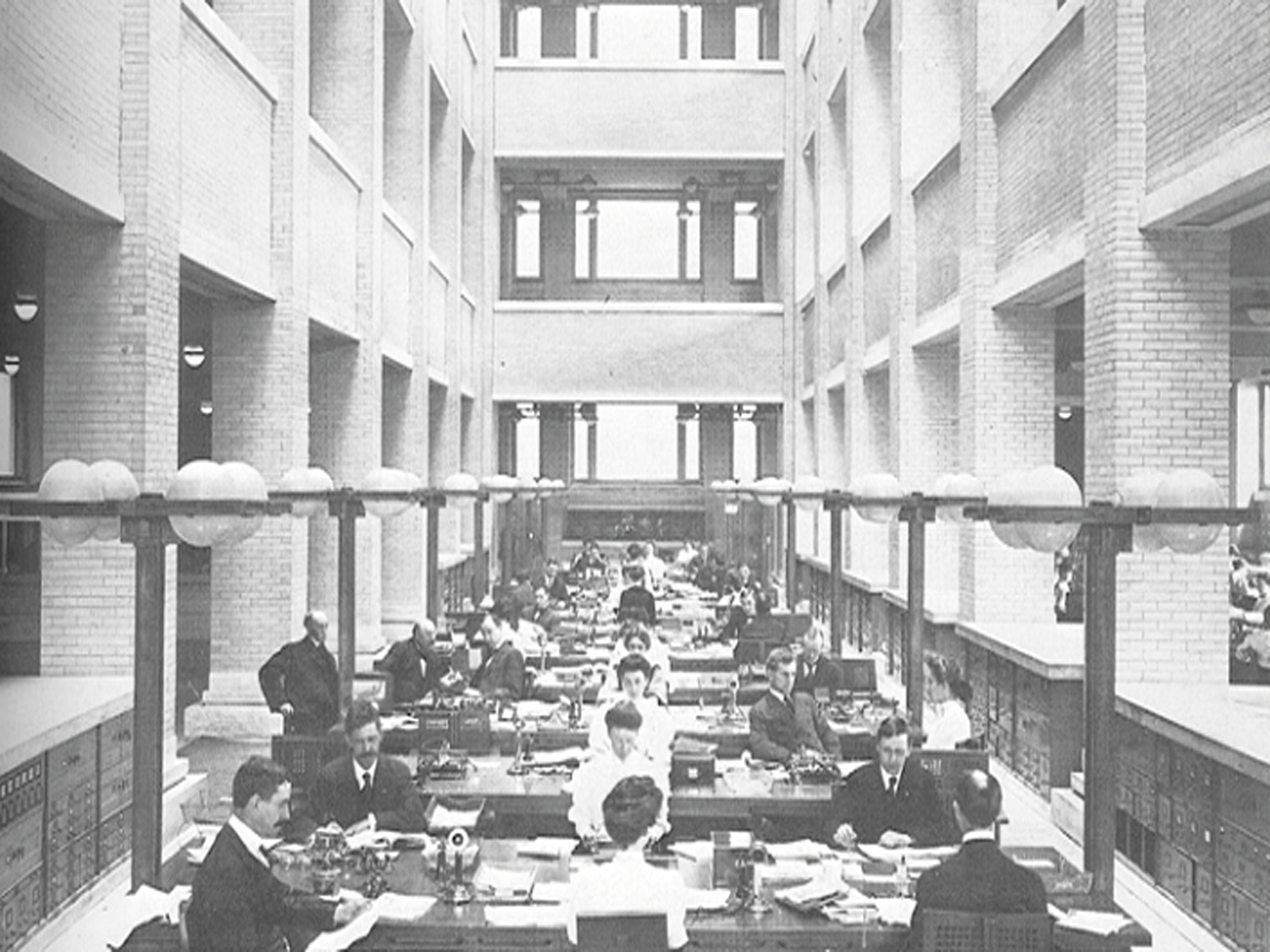Since the Old Admiralty Office (now known as the Ripley Building), the first purpose built office, was constructed in 1726 in London, workplace design has taken on a multitude of shapes and forms. As trends come and go throughout the decades (cubicle farms, dividers, and more recently slides and jukeboxes), it’s up for debate whether some of these design trends are effective.
Modern office design now must incorporate a new range of workers, such as web designers, content managers, digital architects and data scientists. However, as workplace trends have faded in and out of favour, one design has always been at the forefront: the open plan office.
{{cta(‘9aa18d13-ea7e-4730-ae70-c4c8242ee0bd’)}}
Architect Frank Lloyd Wright
Frank Lloyd Wright designed the Larkin Administration Building in New York, which opened in 1906. The design, a revolution of its time, was an open-plan factory style with rows of desks surrounded by managers’ offices.
“The good building is not one that hurts the landscape, but one which makes the landscape more beautiful than it was before the building was built.” – Frank Lloyd Wright
Bürolandschaft, or the “Office Landscape”
In the 1960s, open plan took a slightly new direction with a method called Bürolandschaft. This design grouped desks together in patterns designed to encourage collaboration and create a happy workforce. In an attempt to foster a more interactive workspace, walls, filing cabinets or plants where used to create different working zones. This was the beginning of what we now commonly refer to as open plan offices.

“Would You Let Your Daughter Work in an Open Plan Office?”
It seems that by 1968, open plan was causing a bit of controversy within some sections of society! The headline itself is quite misleading (what we would consider today as ‘click bait’), as the article actually discusses the positive effect Boots achieved after one year of operation in their new open plan office in Nottingham. At the time, this was the largest open-plan office block in the UK, and a centre for large corporations within Europe.
“Office output has gone up. Staff in full view of one another, work harder. There are far fewer inter-office memo’s because direct consultation is so much easier. Timekeeping has improved and there is less absentees.”
Although the tone of the article is very much of its time, Boots did report an increase in productivity and employee wellness, and increased collaboration between departments. They could potentially be seen as an early adopter of activity-based working, stating “with desks arranged in functional groups so the work of one lead automatically to the next”. They also had what could be considered an early version of a modern-day employee wellness and retention programme – employees were treated to petrol allowances, subsidised travel fares and a dedicated staff bus from the suburbs.

The Age of Modern Workplace Design
Modern working trends show open plan is most effective when its combined with an agile and flexible working policy, giving the workforce the ability to choose exactly how they manage their responsibilities and tasks on a daily basis. WorkTech’s Kasia Maynard discusses how open plan offices can be successful:
“Open plan design can encompass a variety of work settings that have the opportunity to offer privacy and freedom from distraction.
Adopting a neighbourhood theme, for example, can break up the unvaried nature of open plan, creating spaces to spark curiosity and collaboration but also allowing areas or corners for concentrated work.”
In the age of modernity, employers must cater for the needs of their diverse workforce. Individuals work in different ways, and are productive at varied times of day, in a selection of working environments. Some thrive in vibrant open areas, while others need quiet zones to concentrate, so a mix of both is key.
Benefits of Open Plan offices on Employee Health
A recent study of government employees in the US discovered that those in an open plan office achieved 20% more physical activity compared to employees who worked in walled cubicles, and a staggering 32% more than those who had private offices. The study also concluded the most active employees saw benefits outside of the workplace too, with wearable technology, such as heart sensors, finding a reduction of 14% in stress levels.
Workers in open plan offices achieved 20% more physical activity compared to those working in walled cubicles
Providing a range of spaces, aka activity-based working, usually means a selection of break out spaces, huddle rooms, meeting rooms, quiet spaces and areas to collaborate. The idea is to create a productive environment within an open plan office. In the Modern Workplace Report, activity-based working is shown to be on the rise across the globe, with Australia leading the way.
As we move towards a new era of workplace design, taking into consideration employees’ need and requirements, workplaces will become more productive, and the place to exchange ideas and meet with colleagues – to quote Dr Nicola Millard, Head of Customer Insight & Futures at BT Global: “we are social creatures, we come to the office to collaborate”.
Poonam Bharj I Business Development Director I Condeco
